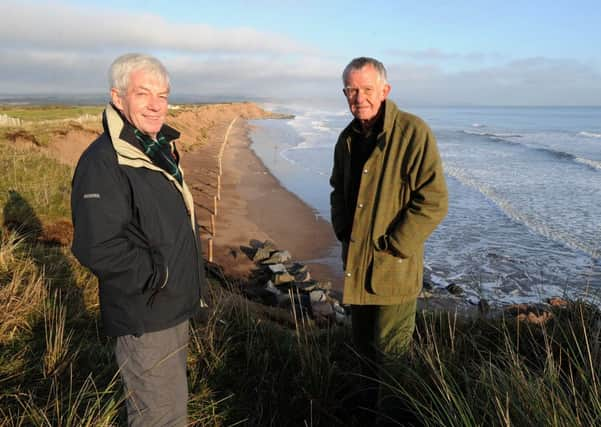Plan to stop Montrose Golf Links sinking into sea


The 452-year-old Montrose Golf Links is facing a battle for survival as erosion from the North Sea has started to destroy parts of the ancient course.
Managers at the course, the fifth-oldest in the world, will attempt to work out the best way to save the greens and preserve features created by legendary Scottish golf course designer Old Tom Morris.
Advertisement
Hide AdAdvertisement
Hide AdThe Medal course has already had to be altered after storms led to the loss of dunes at the edge of the fairway between the second and fifth holes.
Alan Crow, chairman of Montrose Golf Links Limited, said: “The storms of last week took another 1.5 metres off the beach level, and two metres off the top edge of the dunes.”
The original sixth tee disappeared in 1994, but since then there has been a steady progression and about 10 metres of dune frontage fell away a couple of years later.
“The overall result since the erosion kicked in in the late 1980s and early 90s is that we’ve lost between 35 and 40 metres.
“As a result of that we rerouted and redesigned the second hole to make it playable and take it away from the edge of the dune.”
Montrose councillor David May said: “Over the last 20 years coastal erosion has had a devastating effect on the beach at Montrose and also the loss of much of what was part of the second fairway of our course.
“This led to Montrose Golf Links Limited having to spend considerable sums on realigning the fairway.”
It has been estimated that the Montrose coastline could wear away by up to 90 yards over the next 50 years. The sixth tee was made unplayable by a storm 15 years ago, and green keepers have continued fighting the elements ever since.
Advertisement
Hide AdAdvertisement
Hide AdNew sand fencing has already been installed to replace the barrier that has been lost, and council workers will stay in regular contact with the course manager in order to monitor the impact of the tides.
After further discussion between Mr May and the council, a meeting will be organised later this month with representatives of the Montrose Golf Links and councillors to develop a strategy to save the course.
A full stakeholders’ meeting will then be organised with others including GlaxoSmithKline and Montrose Harbour Board.
Experts say the conditions that led to the development of beaches and dunes have now been reversed. Sediment is being washed away so the beaches are getting narrower and the shoreline is moving inland and cutting into dunes. The second issue is rising sea levels, which are starting to engulf sections of the coast that had not been affected before. These effects are working together to make the shoreline move landward and erode whatever is at the bank.
A Montrose lad called James Melville is credited with recording the existence of golf at Montrose as early as 1562. He enrolled at St Andrews University at the age of 15 and his diary records that he was taught from the age of six to play many sports, including archery “and how to use the glubb for goff”.
He was born in 1556, so it is established that the game was being played in the town by, and very probably before, 1562.